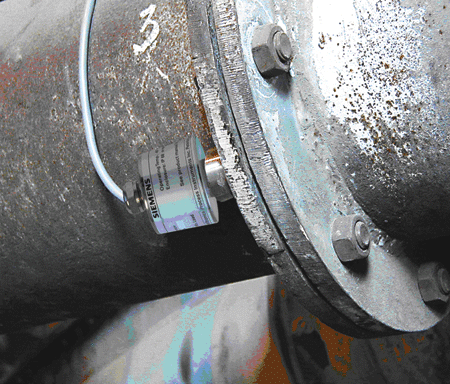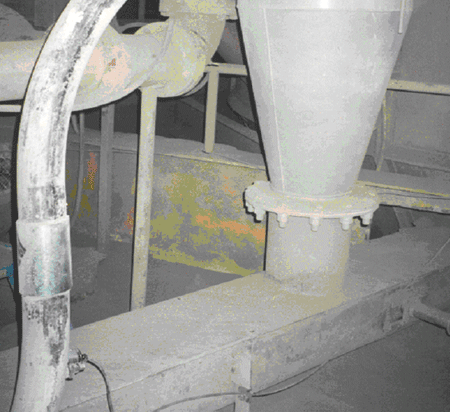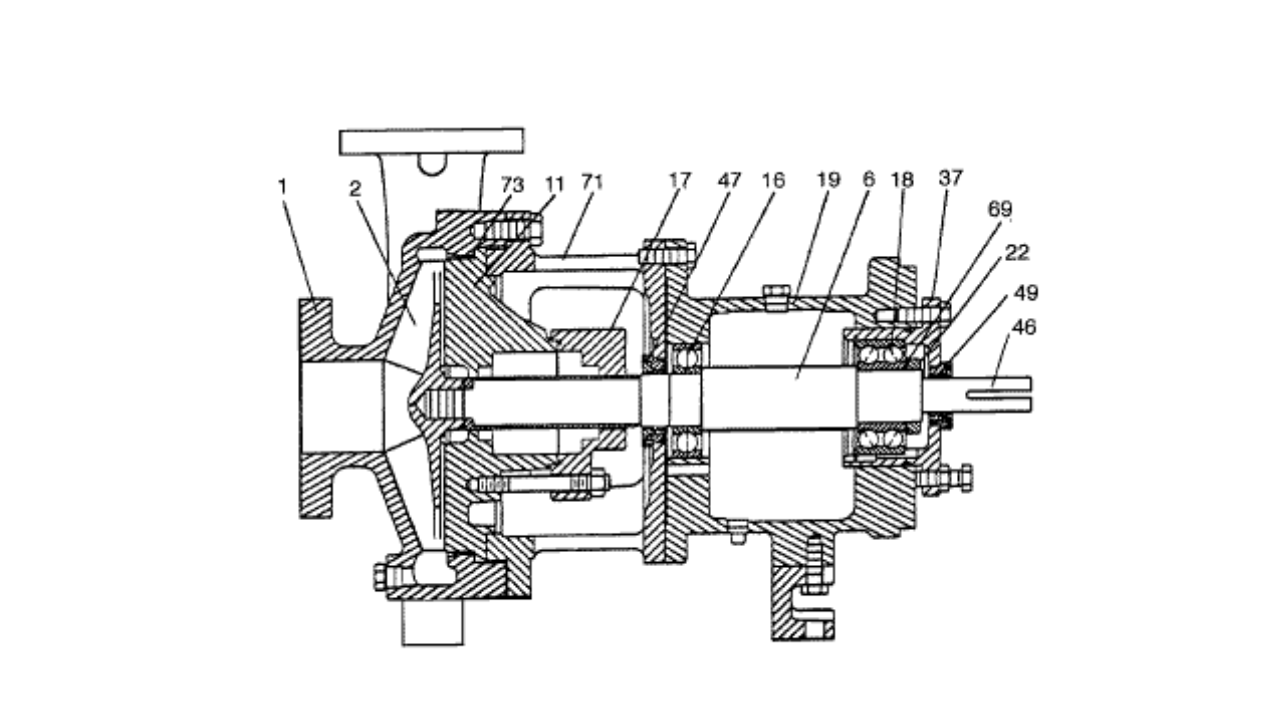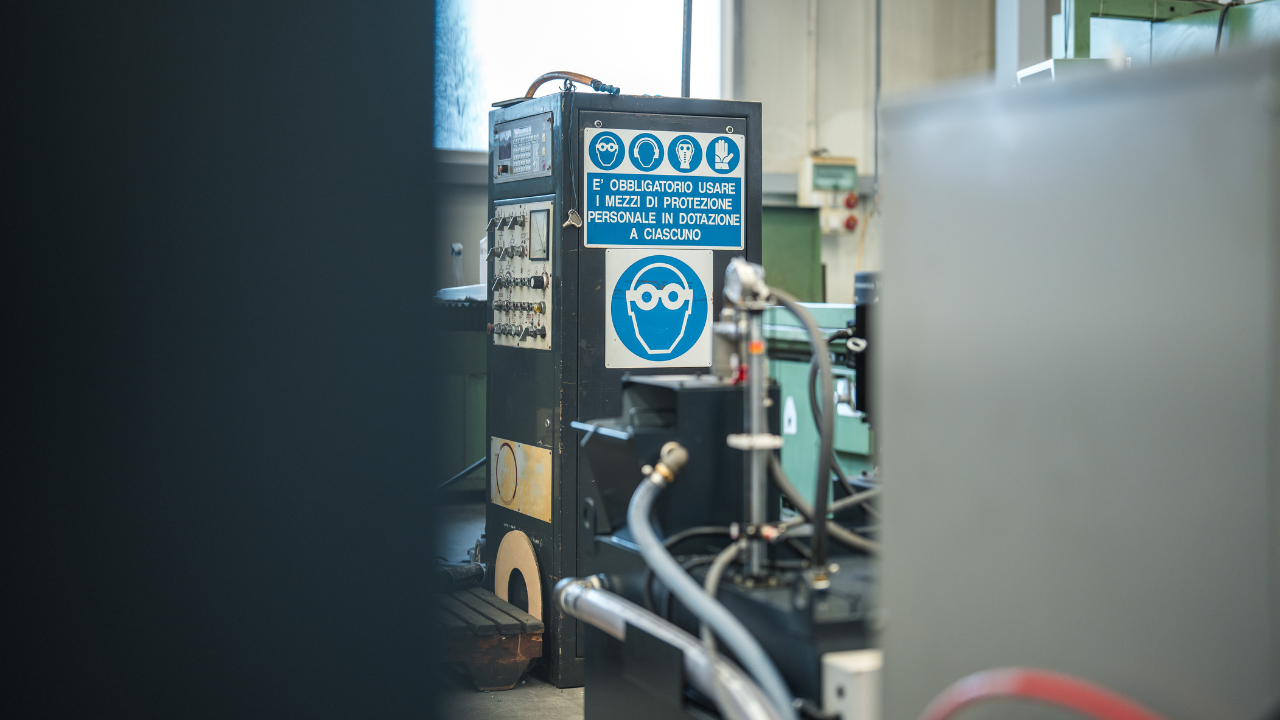Digging Up Savings: Go with the Flow
Mark A. Morton and Sheldon V. Shepherd, Siemens Energy & Automation
Detecting bulk solids flow with acoustic monitoring technology.
It’s important to find out if material flows are present or not throughout a bulk-processing facility; material cost savings and increased plant efficiency can offset an investment in monitoring. Most bulk solids processors can do this using low-cost acoustic emission-monitoring technology.
Noncontacting acoustic technology originally appeared on the industrial scene to detect wear on large turbines. Today the technology monitors solids flow in processing plants. It nonintrusively uses sensors to monitor high-frequency sounds or structure-born acoustics. Friction and the impact of powders, granules, and solids in motion generate the acoustics.
Also, because the sensor never contacts material, you reduce wear and tear. This noninvasive design also provides the benefit of a sensor you can install without shutting down or upsetting the process. The acoustic emission-monitoring sensor is an excellent example of how you can adapt a technology developed for one type of equipment monitoring for use in bulk solids processing.
You don’t need to interrupt material flow or shut down the process to install or maintain the sensor. The unique piezocrystal only responds to signals in the 100-kilohertz range, so it ignores the low-frequency sounds that vibrations or machinery generate. The sensor can operate in a stand-alone system or interface with a facility’s process control system. Typical applications include flow/no-flow or high-flow/low-flow monitoring and plugged chute detection. You can also use it as a broken filter bag alarm in a dust collection system.
Material handling applications
You can apply noninvasive detection of solids flow in several ways in the material handling industry. When the flow of solids blocks or plugs chutes, it can cause lost production time and require unnecessary maintenance. In the area of dust collection, a faulty dust collection system’s release of particulate matter into the environment is not desirable for the facility and the local community.
In the past, invasive techniques were the only available ways for industry to monitor the presence or absence of material. Typical intrusive devices employed mechanical paddlewheels, tilt switches, and optoelectric, proximity, vibrating, capacitive, and inductive technologies. Unfortunately, by its very nature, any material that requires plugged-chute detection typically displays enough adhesive qualities to foul any invasive sensor, rendering it useless.
The plant engineer’s ideal flow-monitoring technology doesn’t contact the material you are monitoring. This eliminates the cost and hassle of cleaning the sensor on a regular basis. You also minimize wear on the sensor because it isn’t subject to the abrasive properties of bulk solids flow.
Steel and cement
A challenge in the steel, cement, and other heavy processing industries is maintaining the proper fuel feed rate to the furnace—essential for ensuring the right processing temperatures. In one example, the furnace burns pulverized coal delivered through injectors. The kiln operates at 1,200°C (2,192°F). Head loss in the injectors can result in temperature loss and poor production. A sudden increase in pulverized coal load in the injectors can lead to a potentially dangerous increase in melting point temperature levels.
In this example, to ensure smooth operation and an effective way to monitor the flow of coal into the furnace, each injector has an acoustic sensor mounted on the pulverized coal in-feed conduits. The sensor monitors acoustic emissions from the movement of the coal. The sensor immediately detects any injector inflow blockage or sudden increase in pulverized coal flow. Each sensor in the process provides a 0–10 volts direct current signal, which a programmable logic controller monitors. In the event of a blockage or uneven flow, the signal generates an alarm. Operators can then take quick action to fix the problem before it upsets the process. Installed upstream from the injector, the sensor mounts outside the process for noninvasive process monitoring. You can install the unit in minutes via a clearance hole and bolt welded on a metal component of the process. The sensor has a stainless-steel housing sealed against dust and moisture. With no moving parts, it requires little or no maintenance.
Acoustic sensors continuously monitor the coal feed to the heavy-duty furnace. Operators are immediately alerted if a flow change occurs. This facilitates smooth regulation of the furnace operation to ensure maximum productivity.

Operation principles
Acoustic energy waves occur naturally when matter vibrates at a frequency usually between 0 hertz and 600 kilohertz. Sound is acoustic energy in the range of 20 hertz to 20 kilohertz. Lower frequency acoustic energy has a long wavelength and takes longer to attenuate. The low-frequency sound of a foghorn can travel for miles through densely attenuating fog. Higher frequency acoustic energy has a short wavelength and dissipates rapidly. Consider a low note struck on a piano, which carries for a longer time than a high note, which lasts an instant. (See the figure below.)
Originally adapted from a device used to monitor wear on large turbines, bulk solids acoustic monitoring technology uses a piezocrystal—a type of crystal that generates electrical current when it is subjected to mechanical stress. Bulk solids acoustic monitoring uses a special type of piezocrystal that only responds to a designated high-frequency bandwidth. Acoustic energy the sensor receives within a particular frequency range excites molecules in the piezocrystal, producing a continuous, measurable electrical signal it can interpret. The electrical output from the piezocrystal is in direct proportion to the level of acoustic energy the device receives. Additional amplification and processing by the sensor and associated electronics convert the piezocrystal output into an electrical signal; you can use it to indicate solids flow, 0–10 volts direct current, or 4–20 mA.
Most plant vibration is in the low-frequency range, well below 100 hertz. The sensor monitors a relatively narrow bandwidth, detecting acoustic energy between 75 kilohertz and 175 kilohertz, nearly a thousand times the frequency of normal plant noise. Typical sources in an industrial environment for high-frequency acoustic emission are friction or the impact of particulate matter against metal.
Another important property to consider is propagation, the transfer of acoustic energy at a molecular level. Acoustic energy easily propagates through dense materials such as metal, whereas it propagates poorly through less dense materials, such as air. This enables the technology to be immune to high-frequency extraneous noise anywhere other than the designated monitoring area. The sensor detects the high-frequency energy waves generated by the impact of solids against a metal surface, such as a chute, pipe, or pneumatic line.

Dust reclamation
In a dust reclamation system, cement dust forces itself through a line into a cyclone, which separates the air from the dust. Operators then add reclaimed cement dust to finished cement. If the dust in the chute to the rotary valve bridges and becomes an obstruction, you should immediately detect it to maintain the process.
In the event of a dust bridge, there is no way of knowing whether or not the rotary valve is starved until the system shuts down. The process is difficult to inspect during operation, and it isn’t possible to have an inspection port at the discharge of the system for safety reasons. Shutting down for manual inspection means time, effort, and material loss.
The acoustic sensor detects changes in high-frequency acoustic emissions from machinery or bulk materials in motion. It reacts to flow changes—warning of a blockage, product absence, or equipment failure. Installation of an extended-temperature sensor is easy. It mounts outside the process, and can be bolted or bonded in place in minutes without process shutdown. A control unit measures the output.
The acoustic sensor has proven to be a cost-effective investment in productivity. Operators can now maintain the system efficiently, because the acoustic sensor provides constant flow-monitoring data. Operators are immediately aware of a plugged chute, blower shutdown, or rotary airlock feeder failure, and can take quick action to correct the problem. This frees staff from frequent manual inspections of the blower, the rotary feeder, and the line.

Mark A. Morton is a product marketing manager at Siemens Energy & Automation in Spring House, Pa.
Sheldon V. Shepherd is an account manager at Siemens Energy & Automation in Grand Prairie, Texas.
Related Articles

OEE: Overall Equipment Effectiveness

What the Pump Was Designed to Do and Why it Doesn't Do it

What is Wrong with the Modern Centrifugal Pump?

Chain Drive Design Recommendations

Classifying Chemicals to Assure Effective Sealing




